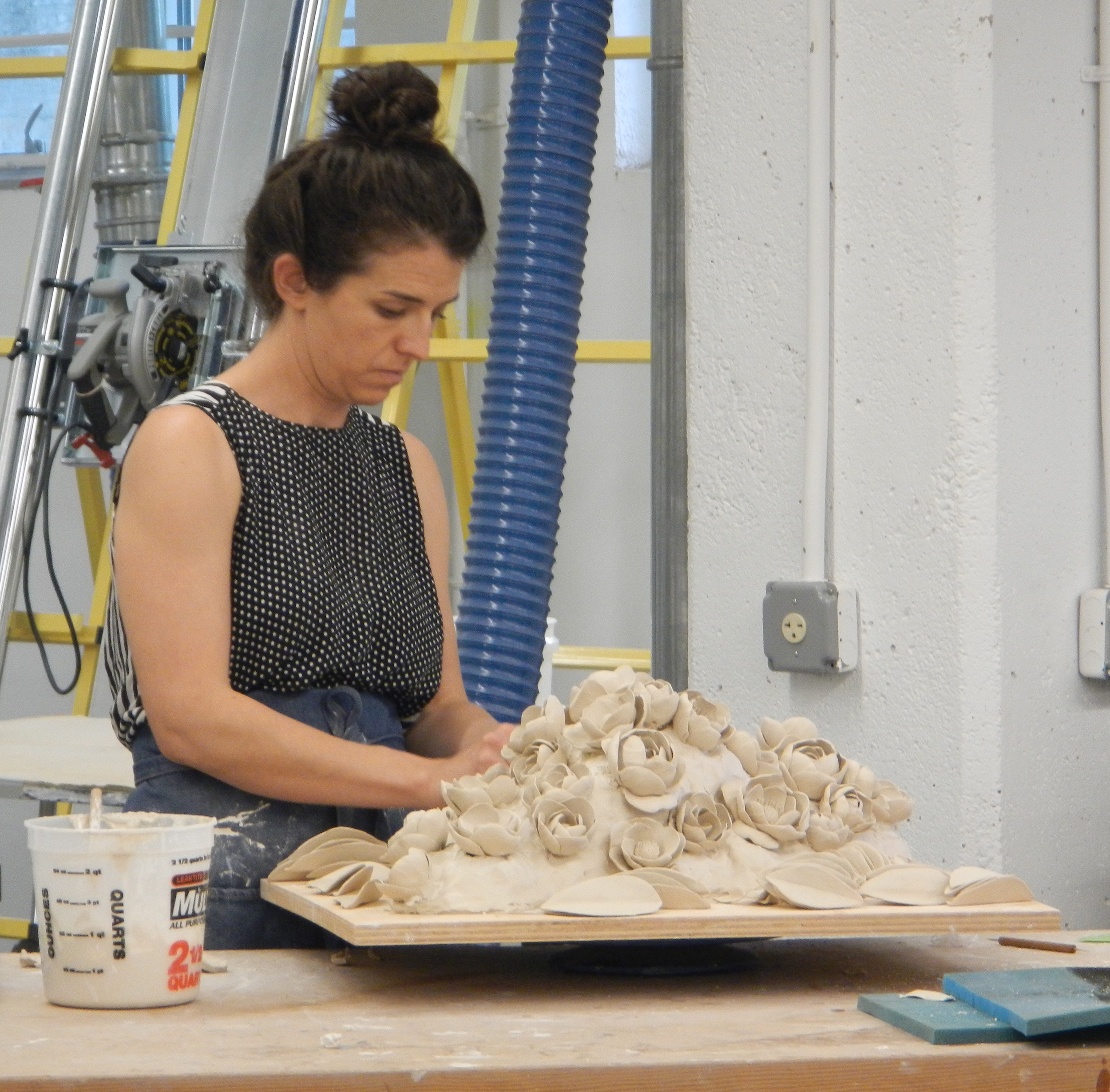How much do I love this symposium? Let me count the ways.
Even if I had not been here two previous years, I would find this amazing. Trust me when I say (although you may be aware already) that potters are not a dime a dozen. You may have heard me say that the life of a "basement potter" can be isolating. So shmoozing and confabbing with more than 30 potters and five presenters and a few more pottery assistants today was a blast, a gas, a zing of delight.
Yesterday Susan, a friend from the NJ Potters' Guild, drove with me down to Roanoke, a seven-hour trip. We explored this cameo of a campus a bit early on. The symposium started this afternoon.
Attendees gathered to see a slideshow of images we had each sent in advance, that in essence became our professional credentials. This is an act of courage for some, because while some of the potters and sculptors are very fine, some are recent arrivals to the art and craft of clay. They find out it doesn't matter.
Dinner looked great. I am on a restricted diet the next four days of something like grape tomatoes, (okay, maybe a little more than grape tomatoes, but not much more). But the food looks very nice if you happen to be able to eat like a normal person this week.
And after dinner came a presentation by Rahele. Filsoofi, originally from Tehran, Iran. Rahele, 39, is an accomplished artist and scholar who has worked in clay for years, as well as with other art media. She has lived in the United States for probably half her life, and made it her important work for the last two years to research and write about essentially unchronicled, unknown women potters in Iran. Her representative subjects were three women, from three regions of Iran, two of whom make and very successfully sell the same traditional food-preparation, cooking and serving vessels that have been made in the area for 3,000 years; and one of whom still uses the same clay of her birth region but makes sculptural, animal forms she dreams up (literally). The photos and story about those women, and their connection to the land around them and to traditional ways of life, formed a new narrative for the group hearing about them.
If we at the symposium can relate to these women making pots across the world, we can certainly find a basis for much conversation and exchange right here on one lovely Southern campus. That is what we did, in fact, socializing and finding out about one another's personal and professional lives over drinks into the late evening.
Tomorrow, five American women, very fine clay artists all, will begin presenting their philosophies and techniques as we watch them make the work for which they are known. I'll save introductions to them and their work till then.
As ever, as at the last two of these symposia, there will be photos tomorrow, so rub your eyes and rest up.




















































